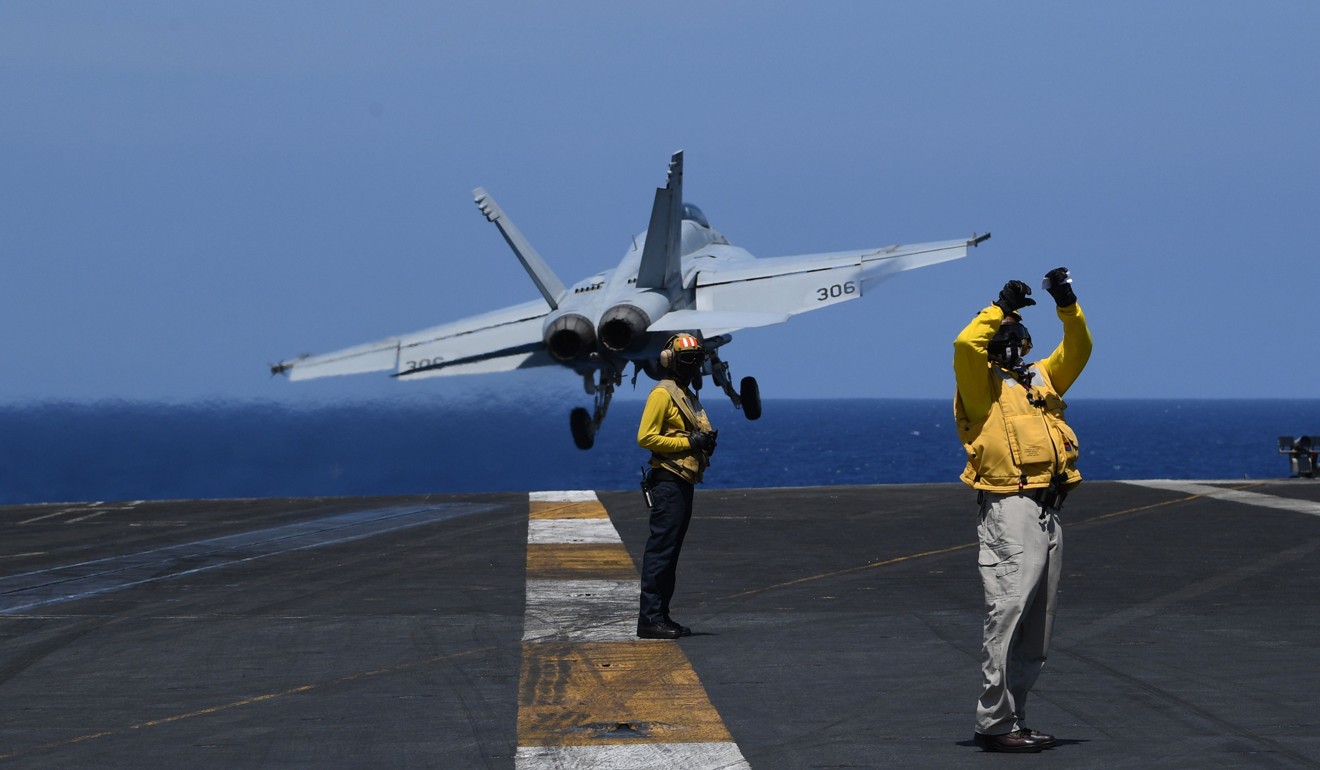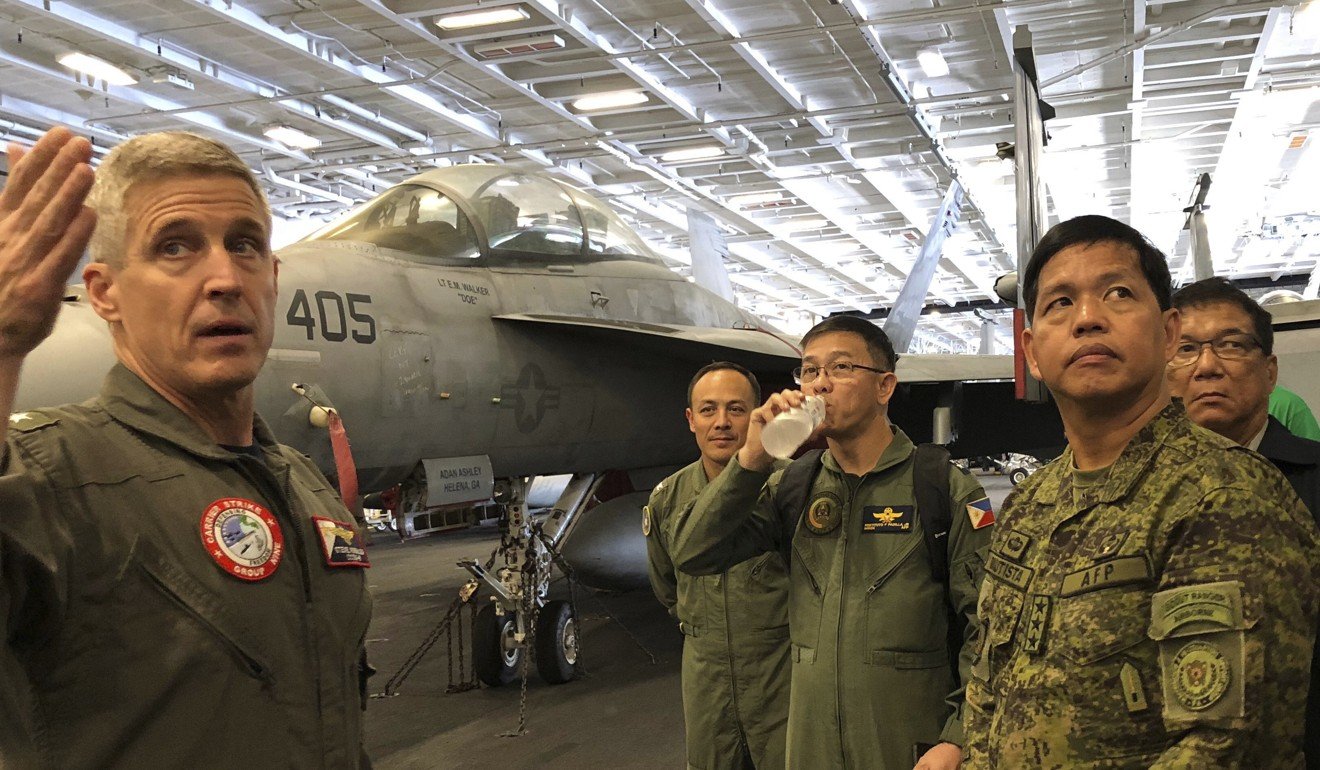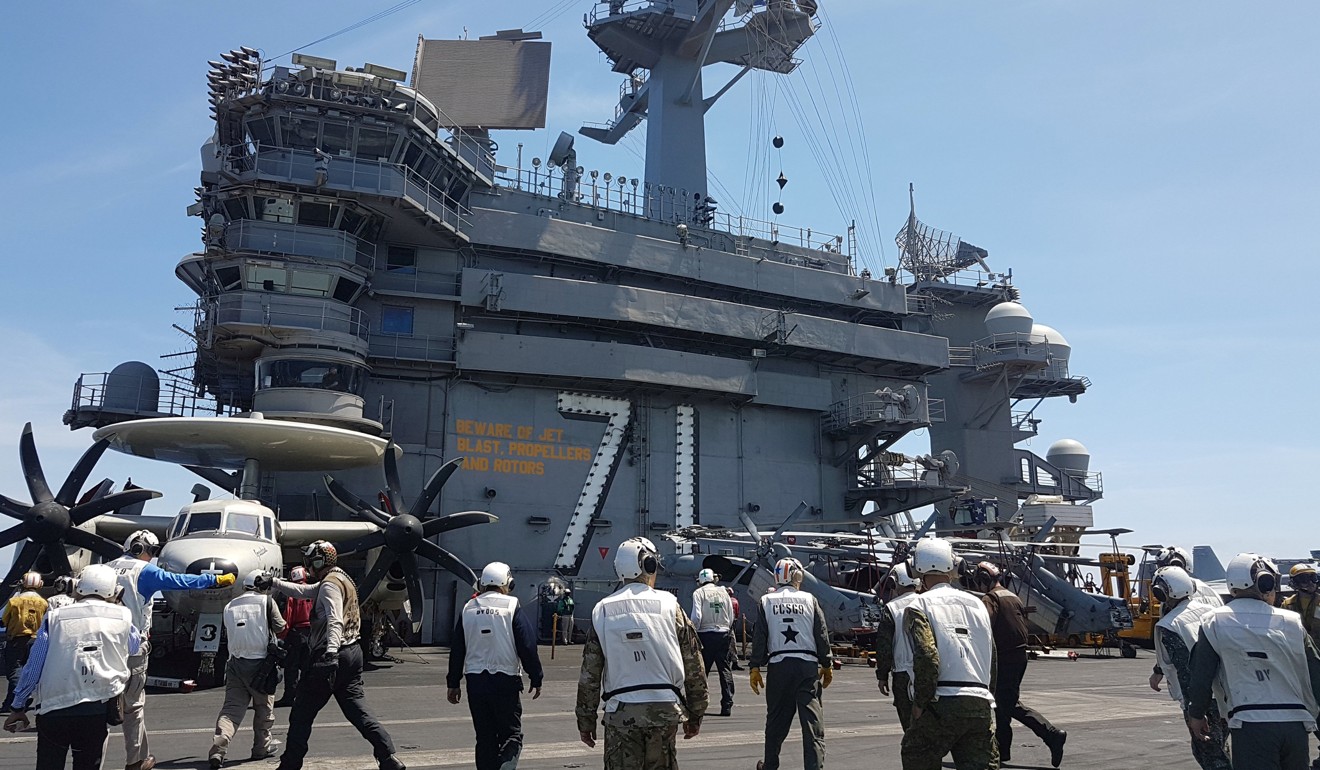
US aircraft carrier sparks regional fears as it challenges China’s military might in South China Sea
Washington stakes no claims in territorial disputes of the sea, but has declared maintaining the freedom of navigation is in its national interest
As fighter jets streaked overhead, a US aircraft carrier sailed through the disputed South China Sea to the Philippines on Tuesday, sparking regional alarm as strove to display America’s military might in the face of Chinese development in the sea.
The US Navy flew a small group of Philippine generals, officials and journalists to the USS Theodore Roosevelt, where fighter jets - from its roster of 65 aircraft, also including helicopters and spy planes - landed and took off from the nuclear-powered ship by catapult with thunderous blasts.
Recent US deployments of aircraft carriers, backed by destroyers, to the disputed waters for freedom of navigation challenges to Beijing’s territorial claims are reassuring allies but also prompting concerns with China’s own show of force in the busy waterway.
“It’s a showcase of the capability of the US armed forces not only by sea but also by air,” Philippine army Lt. General Rolando Bautista said after joining a tour of the 97,000-ton carrier.
“The Americans are our friends. In one way or another, they can help us to deter any threat,” Bautista said, adding that the American military presence helps secure vulnerable Philippine waters.m


At least twice this year, the US Navy has deployed destroyers in freedom of navigation sail-bys near Chinese-occupied Scarborough Shoal, which Beijing wrestled from the Philippines in 2012, and Manila-claimed Mischief Reef, which Chinese forces occupied in 1995.
Another US carrier, the USS Carl Vinson, patrolled the contested waters last month, taking part in anti-submarine drills in the South China Sea with Japanese forces and visiting Vietnam with its 5,000-strong crew, the largest such US military presence there since the Vietnam war ended in 1975.
Philippines hopes for energy deal with China in South China Sea
China has protested those moves, calling it US meddling in an Asian conflict, and renewed warnings to Washington to stay away.
Beijing has also reportedly been holding large-scale naval exercises in the area featuring its only operating aircraft carrier, while its air force says it recently sent some of its most advanced fighters and bombers for “joint combat patrols” over the sea.
Those included H-6K long-range strategic bombers that carry DH-20 long-range land-attack cruise missiles, giving them the ability to hit targets as far away as Australia, along with Russian-made Su-35 fighters.
“What we see now is a show of force and a counter show of force in the South China Sea,” said Roilo Golez, a former Philippine national security adviser and congressman.


While the moves could increase the risks of miscalculation and accidental clashes, Washington’s superior naval power could serve as deterrence to Chinese aggression, Golez said.
The Philippine ambassador to Beijing, Chito Sta. Romana, recently warned that the risks of a miscalculation and armed conflict have risen in the disputed region with a militarily stronger China now able to challenge the US.
Sta. Romana compared the two powers to elephants fighting and trampling on the grass and said, “What we don’t want is for us to be the grass.”
How China is quietly increasing its ability to wage war at sea
Philippine President Rodrigo Duterte’s policy of befriending China has worked, Sta. Romana said, citing Beijing’s decision to lift its blockade around Philippine-occupied Second Thomas Shoal.
China also allowed Filipino fishermen back into disputed Scarborough Shoal after Duterte visited Beijing and raised the issue with Chinese President Xi Jinping in 2016.

Despite such fears and occasional exchanges of rhetoric, US Rear Admiral Steve Koehler told reporters on board the Roosevelt that it has been smooth sailing so far, with US, Chinese and other forces engaging each other professionally.
“I haven’t seen any dangerous interaction,” Koehler said, adding that problems could be avoided “if all the navies are operating in accordance with the international norm and law.”
US keeps watch as China puts on South China Sea show of force
Washington stakes no claims in the territorial disputes but has declared that their peaceful resolution and the maintenance of freedom of navigation are in its national interest.
American officials have said US Navy ships will continue sailing close to Chinese-occupied areas without prior notice, placing Washington in a continuing collision course with China’s interests.

